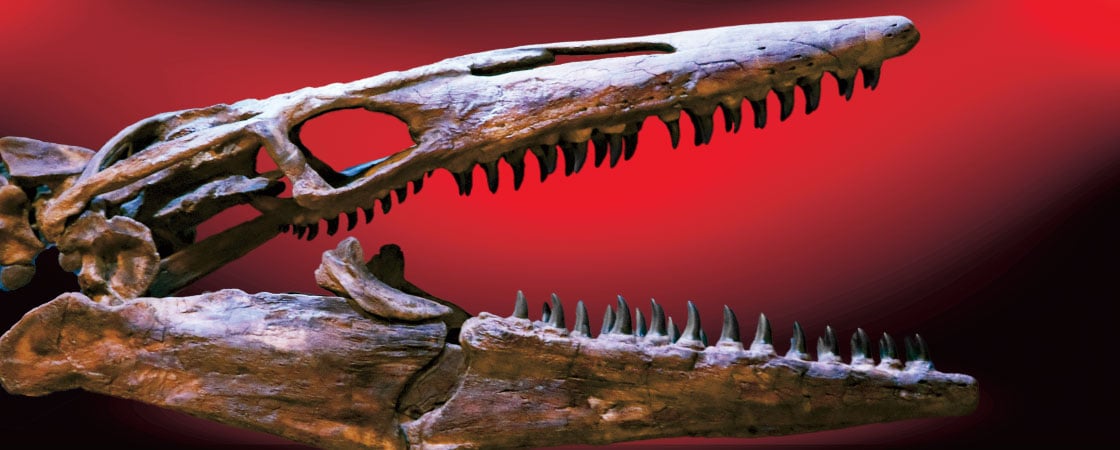You swim in the turquoise waters of a shallow sea. The air above you is thick and heavy, the sun scorching. Winged lizard-like creatures the size of jet planes zip across the skies, then speed toward the water to snap up fish in their mighty jaws.
Beneath you is a world as wondrous and terrifying as the skies above. A creature called a gastropod moves across the sea floor, using its body like a fleshy foot. “Devil’s toenails”—a type of oyster—hide inside their shells. Spiral-shaped ammonites shoot through the water.
But these creatures, strange as they may be, are not the real monsters here. The real monsters are creatures like the fearsome Liopleurodon, with its massive body and toothy snout. It is a swimming killing machine that makes sharks look like kittens.
Yet you have no reason to be afraid. Because you are a monster too.
You are an ichthyosaur, a marine reptile that prowled the ocean millions of years ago. You’re giant, with eyes the size of tennis balls and a mouth full of mean teeth. Few creatures can match your speed—certainly not the fish and squid you feast on.
For years, you live your life in this extraordinary world. But like all living things, you eventually die.
You fall to the bottom of the sea. Years go by. Years become centuries. Centuries become millennia. The ocean cools. Sea levels fall. Your watery home becomes dry land and all that remains of you is a fossil, encased in rock. Forgotten.
Until one day a 12-year-old human on a windswept beach discovers you. Her name is Mary Anning. And together, you will change the world.
You swim in the turquoise waters of a shallow sea. The air above you is thick and heavy. The sun is scorching. Winged lizard-like creatures the size of jet planes zip across the skies, then speed toward the water. They trap fish in their mighty jaws.
Beneath you is a world as wondrous and terrifying as the skies above. A creature called a gastropod moves across the sea floor. It uses its body like a fleshy foot. “Devil’s toenails”—a type of oyster—hide inside their shells. Spiral-shaped ammonites shoot through the water.
But these creatures, strange as they may be, are not the real monsters here. The real monsters are creatures like the fearsome Liopleurodon, with its massive body and toothy snout. It is a swimming killing machine that makes sharks look like kittens.
Yet you have no reason to be afraid. Because you are a monster too.
You are an ichthyosaur, a marine reptile that prowled the ocean millions of years ago. You’re giant, with eyes the size of tennis balls and a mouth full of mean teeth. Few creatures can match your speed—certainly not the fish and squid you feast on.
For years, you live your life in this extraordinary world. But like all living things, you eventually die.
You fall to the bottom of the sea. Years go by. Years become centuries. Centuries become millennia. The ocean cools. Sea levels fall. Your watery home becomes dry land, and all that remains of you is a fossil, encased in rock. Forgotten.
Until one day a 12-year-old human on a windy beach discovers you. Her name is Mary Anning. And together, you will change the world.

